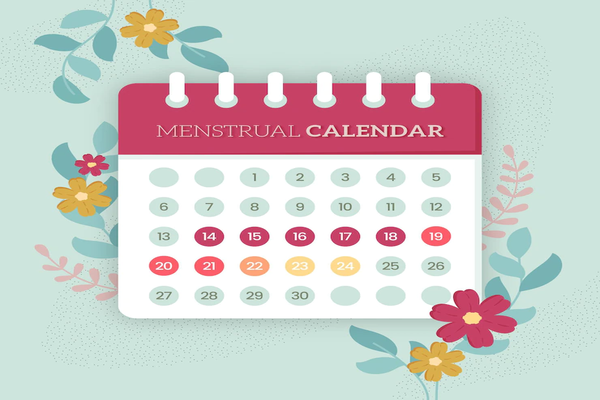Most girls when they were younger, never understood what the menstrual cycle was. They knew that it happened, but they were never able to fully grasp the significance of it. It wasn’t until they got their first period that they understood what it meant to have blood flow through their body.
At first, they felt confused as to why they had so much blood flow, but as the days went on, they came to understand the purpose of it.
As you’ve probably noticed, your menstrual cycle can be a bit of a mystery; the length of your cycle can change from month to month, and even within one cycle, it can be hard to keep track of when you’re ovulating. But it’s important to understand the rhythm of your body and how your period works: that’s why we created this guide on how to calculate your menstrual cycle – so you know when to expect it, or when you should start worrying if it hasn’t arrived on time.
Track your menstrual cycle.
- Use a calendar to track your monthly cycle.
- Track when you menstruate again.
- Keep track of when you ovulate.
- Keep track of when you are fertile, which is the time between ovulation and the next period (when conception can happen).

Identify the first day of your last period.
Once you have determined the first day of your last period, start counting the days forward. This will help you know when you will have your next period.
You may also use a calendar to keep track of your cycles. You can use this information to plan holidays and social events knowing how long it is between each one.
Count the days in your cycle.
To calculate your menstrual cycle, you need to first determine when your last period started and ended. You can do this by counting the number of days from the first day of your last period to the first day of your next period.
Once you know how many days passed between one cycle and another, count those days again until you arrive at a number that’s more than 28 (or less than 21). This is known as “cycle length.” The average cycle length is 28 days; however, it can be shorter or longer depending on factors such as age, weight, hormone levels, and stress levels.
Cycle lengths vary from one woman to another because everyone has different hormone levels in their bodies. It’s important for women who are trying for pregnancy or planning for birth control to track their cycles so they know when they’re ovulating so that they’re able to avoid getting pregnant or prevent an unplanned pregnancy from occurring when they don’t want it—or do want it!
You can use a calendar to help keep track of when you will menstruate again
You can use a calendar to help keep track of when you will menstruate again. Write down the date of your period and mark it in red. This way you can easily see when it starts and ends each month. When you have completed a few cycles, make sure to check for patterns in the length of your cycle.
You may have irregular menstrual cycles if:
- You bleed for less than 3 days or more than 7 days
- You don’t get your period at all (amenorrhea)
BE ready for your menstrual time by using BEKOKA Mensural Pads
In this place, I want to tell you that there are a lot of myths about menstruation, and a lot of females seem to think that there is a way to prevent getting a period or to make the period go away faster. But you should know that period is one of the most important and delicate experiences on the female body. It is able to change the way you feel, think, and act. It is a time of bleeding and discomfort, and for many females, it is a reminder of how much of a womanly creature we are.
Also, every woman’s body cycles between two phases: the first is when her period starts when the feel like she is coming down with something; the second is when the period ends when she feels better.
By trying the previous steps, you are now an expert at tracking your menstrual cycle. All you have to do is follow these easy steps and you will have a better understanding of when that time of the month comes around.


